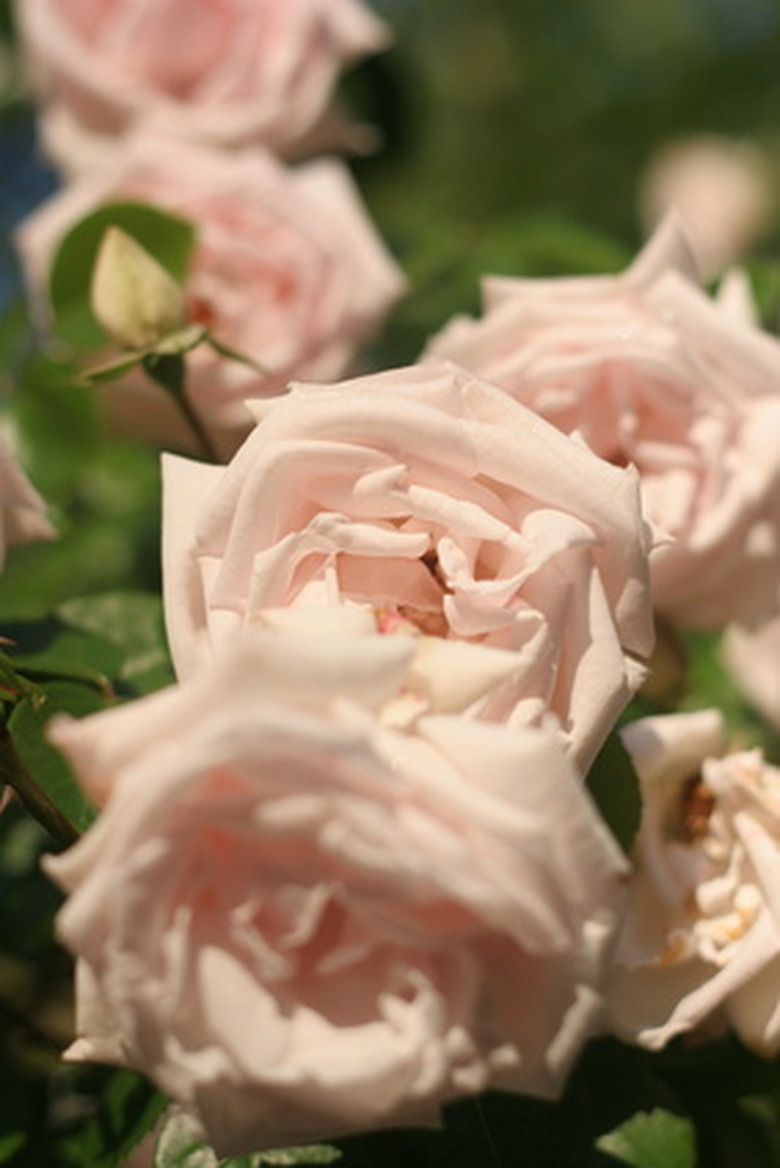Examples Of Ornamental Plants
Ornamental plants are those that add color and interest to a landscape and are cultivated either in groupings to complement other plants or as specimens that stand alone. Ornamental plants may also be indoor plants like houseplants or those used in commercial settings such as malls. Ornamental plants are grown for a particular aesthetic purpose, such as providing a particular feel to a landscape area where plants, ground cover, decks and other structures come together to form a functional and visually appealing space, as University of Minnesota extension describes.
Tulips
Tulips (tulipa x hybrida) are herbaceous perennials with a distinctive form and are available in all colors except true blue. They are a striking ornamental plant in massed beds, planter boxes or containers. Tulips grow in USDA zones 3 to 7 and prefer full sun to partial shade on various soils.
Holly Trees and Shrubs
Holly trees and shrubs (Ilex species), with their often shiny green foliage and bright-red berries, are popular ornamental landscape plants. Some holly trees, like the dahoon holly (Ilex cassine), reach 40 feet tall, whereas dwarf burford hollies (Ilex cornuta 'Dwarf Burford') only reach 6 to 8 feet. Many Ilex species make good specimen trees. Most hollies prefer full to partial sun conditions, on nutrient-rich, well-drained, moist soils. Holly hardiness varies by species, but are typically suitable to USDA zone 6 or 7.
- Ornamental plants are those that add color and interest to a landscape and are cultivated either in groupings to complement other plants or as specimens that stand alone.
- Tulips (tulipa x hybrida) are herbaceous perennials with a distinctive form and are available in all colors except true blue.
Roses
Roses (Rosa species and hybrids) are grown as hedges, specimens or in groupings, as wall and fences coverings or on trellises and arbors. Roses are used in many landscapes and suited for growth in USDA zones 4 through 10, making this plant a popular choice throughout the United States. Most roses require sunny locations and well-drained, organic soils.
Petunias
Petunias (Petunia x hybrida) are popular edging, bedding, or container plants, often grown as annuals, although they are perennial plants in warm climates such as in USDA zones 10 and 11. Petunias come in many colors and combinations, including reds, blues, whites, and may be striped or have other markings. Many petunias are cultivated for their flower form, size and color. Petunias prefer full sun to light shade on nutrient-rich soils.
- Roses (Rosa species and hybrids) are grown as hedges, specimens or in groupings, as wall and fences coverings or on trellises and arbors.
- Petunias (Petunia x hybrida) are popular edging, bedding, or container plants, often grown as annuals, although they are perennial plants in warm climates such as in USDA zones 10 and 11.
Pampas Grass
Pampas grass (Cortaderia selloana) is a good example of an ornamental grass. It grows in USDA zones 7b through 10 and produces tall clumps of arching, thin, strappy leaves and fluffy, feather-like flower plumes. Large cultivars, like 'Sunningdale silver', reach 10 feet tall, and dwarf pampas grass reaches 3 to 6 feet tall. Pampas grass performs best in full sun, but tolerates partial shade. It is drought tolerant and withstands salt spray in seaside locations. Most soils are adequate, except those that are very wet.
References
- University of Minnesota Extension: Urban Landscape Glossary
- Landscape Plants for Subtropical Climates; Bijan Dehgan; 1998
